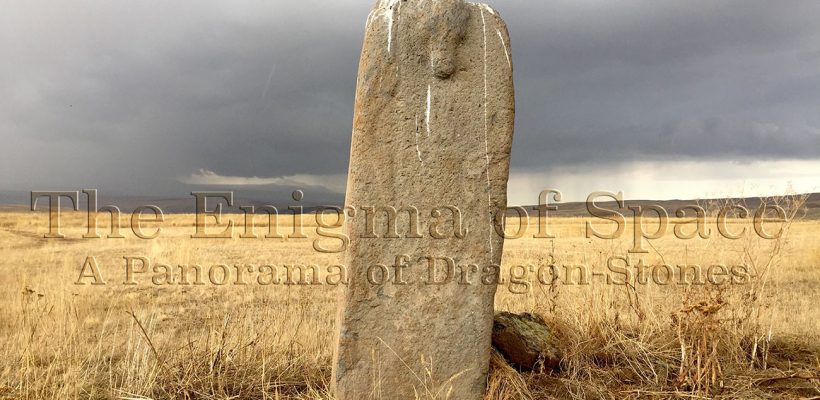
Tjeknavorian Published in a Volume Dedicated to ‘Vishaps’ (Dragon-Stones)
2 min readA 2019 publication by the Institute of Archeology and Ethnography of the National Academy of Sciences features a study by Zareh Tjeknavorian, lecturer in the College of Humanities and Social Sciences at the American University of Armenia (AUA). The volume titled “Vishap Between Fairy Tale and Reality” is dedicated to the interpretation of the dragon-stone phenomenon in an interdisciplinary context. In his chapter, “The Enigma of Space”: A Panorama of Dragon-Stones, Tjeknavorian embarks on “a kind of pilgrimage, movie camera in hand, to the source of some Great Mystery that defies rational explanation.”
The study of the prehistoric monuments (vishapakarer in Armenian, meaning dragon-stones; also referred to simply as vishap), is multifaceted and rich in scientific discovery. From an engaging review of dragon myths and legends throughout history relating to the stones, to a discussion of their iconography and purpose, Tjeknavorian discusses the significance of the monoliths with the remarkable artistry of a master filmmaker. In cinematic terms, as he himself suggests, and through inspiring fragments of dialogue with his characters adeptly woven into the script, his depiction of vishaps reads like a captivating chronicle of an archeological expedition or watching a film based on real experiences, true life stories.
Beyond the historical nuances embedded in the study and the scientific contribution it makes to the field, the absorption and curiosity the narration creates in the reader is compelling, much like the power of the vishaps it portrays. Tjeknavorian explores questions as to what those stones are and how we are to make sense of them by portraying the vishaps “from a variety of angles and in a panoramic view as wide as the spaces they address.”

Zareh Tjeknavorian with a fallen vishap in the Geghama Mountains. (Photo by Alina Tjeknavorian, 2003)
According to earlier studies referenced by Tjeknavorian, as well as the field work he has conducted over the last two decades, these unique monuments reveal the millenia-old spirituality of not only the prehistoric vishap builders themselves, but also of rural people in the present day who revere certain vishaps for possessing supernatural powers. This comes to light through the dragon-stones’ imposing presence in the landscape and also through their imagery; the monoliths are sometimes sculpted as giant fish and include mysterious carvings of what appear to be sacrificed bulls hanging over the stones. The names and legends of Surb Sargis and Katkar have been attributed to two of these ancient monoliths by rural residents who have turned them into shrines. Discussing the worship of them by villagers today, Tjeknavorian writes, “The veneration of Surb Sargis and Katkar is a profound link with the people who raised them, not through a tradition handed down over the millennia, but more remarkably through the spontaneous revelation of a chthonic power; a spiritual intuition shared among those wedded to the cycles of sun and soil.”
Founded in 1991, the American University of Armenia (AUA) is a private, independent university located in Yerevan, Armenia, affiliated with the University of California, and accredited by the WASC Senior College and University Commission in the United States. AUA provides local and international students with Western-style education through top-quality undergraduate, graduate, and certificate programs, promotes research and innovation, encourages civic engagement and community service, and fosters democratic values.
